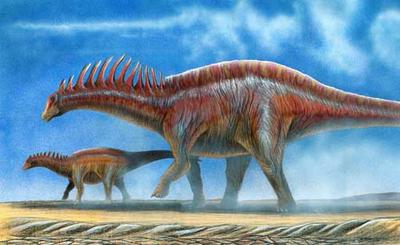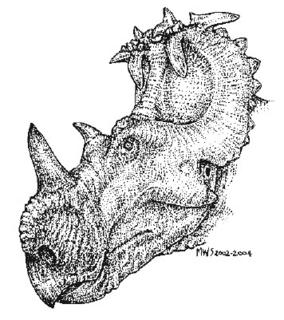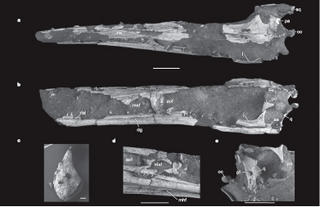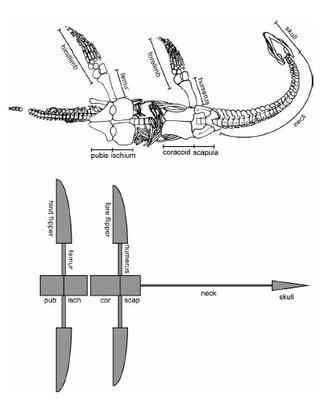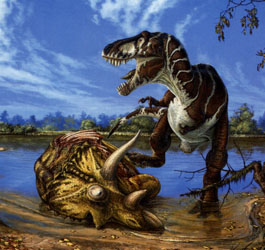Basal Neoceratopsiano de China

On a New Genus of Basal Neoceratopsian Dinosaur from the Early Cretaceous of Gansu Province, China.
YOU Hailu, LI Daqing, JI Qiang, Matthew C. LAMANNA and Peter DODSON
Abstract: A new genus and species of basal neoceratopsian dinosaur, Auroraceratops rugosus, is reported based on material from the Early Cretaceous Xinminpu Group in the Gongpoquan Basin of Gansu Province, China. Auroraceratops is represented by a nearly complete skull and low jaws, and different greatly from all other neoceratopsians by its considerable breadth of the nasals, fungiform expansion of the dorsal end of the lacrimal, highly developed rugosity of the jugal, dentary and surangular, and inflated, striated premaxillary teeth. The finding of Auroraceratops adds diversity and helps elucidate the evolution of basal neoceratopsian dinosaurs.

